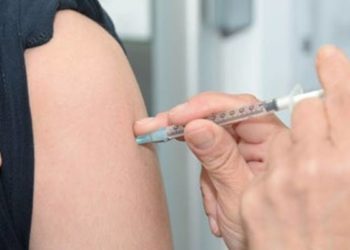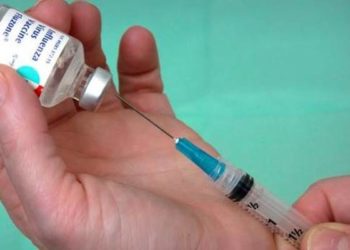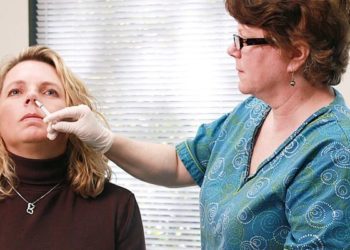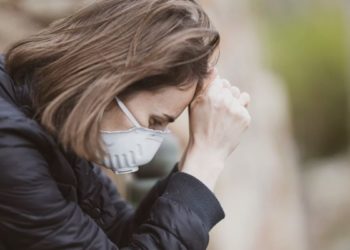#VisualAbstract: Plant-based QVLP influenza vaccine likely non-inferior to commercial inactivated vaccines
1. The plant-based quadrivalent virus-like particle (QVLP) seasonal influenza vaccine provided strong protection against respiratory illness and influenza-like illness.
2. The QVLP vaccine had a similar safety profile to other current non-living influenza vaccines, with the vast majority of adverse events being mild to moderate.
Evidence Rating Level: 1 (Excellent)
Study Rundown: Each year, the influenza virus imposes a heavy burden on healthcare systems across the world. While its influence varies widely depending on the yearly strain, the effects of a serious influenza pandemic would have disastrous consequences around the globe. Trivalent and quadrivalent vaccines remain the first-line defense against influenza; however, given their reliance on animal eggs for production, there is ongoing concern regarding their overall production capacity and potential for random mutations. This study was a combination of two randomized, observer-blinded phase 3 efficacy trials of a plant-based quadrivalent virus-like particle (QVLP) vaccine against the influenza virus, consisting of adults ages 18-64 (Trial 1) and 65+ years (Trial 2). Overall in Trial 1, although the QVLP vaccine did not meet the study’s primary efficacy outcome for success, it exhibited protective ability against respiratory illness from any influenza strain. In Trial 2, the vaccine met the study’s primary non-inferiority criteria against quadrivalent inactivated vaccine (QIV), and likewise provided a strong protective effect. Both trials were associated with a robust CD4 T-cell response. The vast majority of adverse events in both trials were mild to moderate, including headache, myalgias, malaise and fatigue. Adverse events in both trials were consistent with those seen in other commonly-used non-living influenza vaccines. An important shortcoming in Trial 1 was its lack of inclusion of a comparator vaccine; likewise, although these results show a promising result for these novel vaccines, no real conclusions can be drawn until their performance is assessed over several seasons, with multiple influenza strains.
Click to read the study in The Lancet
Click to read an accompanying editorial in The Lancet
In-Depth [randomized controlled trial]: This study combined two randomized, observer-blinded, placebo-controlled multinational trials including one trial with participants aged 18-64 (Trial 1) and another with participants over 65 (Trial 2). Trial 1 recruited a total of 5077:5083 participants (vaccine:placebo), while Trial 2 recruited a total of 6396:6398 participants (QVLP:QIV). In the former, the primary outcome was absolute vaccine efficacy, measured by antigenically-matched influenza strains. Secondary outcomes included respiratory illness from other influenza strains. In Trial 2, the primary outcome was relative efficacy of the QVLP vaccine versus a commercial QIV, measured by occurrence of any influenza strain. Secondary outcomes included respiratory illnesses by any strain.
Per-protocol analysis demonstrated a failure to meet the success criterion (70% absolute vaccine efficacy) in Trial 1 (absolute vaccine efficacy = 35.1%, 95%CI 17.9-48.7%); however, an overall preventative effect of the vaccine against respiratory illness caused by any strain was reported (38.8%, 95%CI 27.8-48.1%). In Trial 2, non-inferiority to commercial QIV vaccine was met (relative vaccine efficacy 8.8%, 95%CI -16.7-28.7%). A robust CD4 T-cell response was seen in both Trial 1 and Trial 2 vaccine groups regardless of age. A total of 54.8% of individuals in Trial 1’s vaccine group reported a local or systemic adverse event within the first 7 days of receiving the vaccination. The majority of these events were mild-moderate in severity and included pain, headaches, and myalgias. In Trial 2, the overall rates of adverse events were higher than in Trial 1, although rates were similar to that of the commercial vaccine group. The humoral response to the QLVP vaccine in the Trial 1 vaccine group was lower than that seen in Trial 2. Notably, however, the absolute vaccine efficacy did not differ significantly between Trials 1 and 2 and vaccine efficacy was maintained up to 180 days post-vaccination in both groups.
©2020 2 Minute Medicine, Inc. All rights reserved. No works may be reproduced without expressed written consent from 2 Minute Medicine, Inc. Inquire about licensing here. No article should be construed as medical advice and is not intended as such by the authors or by 2 Minute Medicine, Inc.







